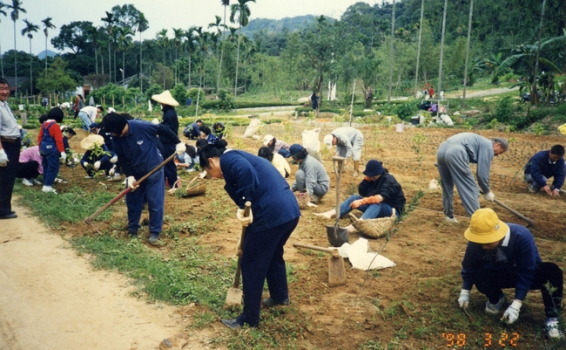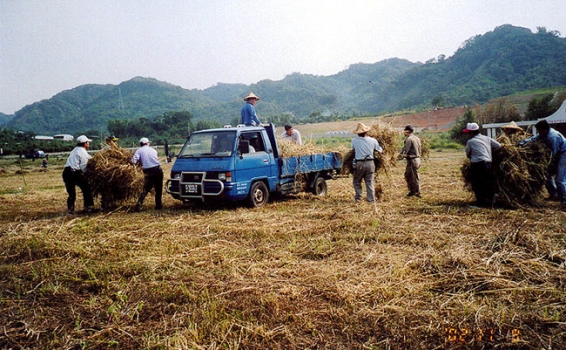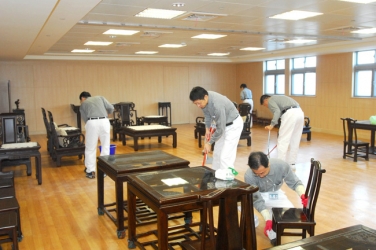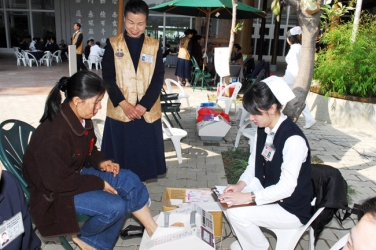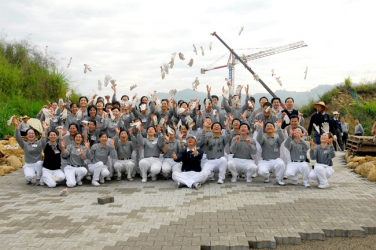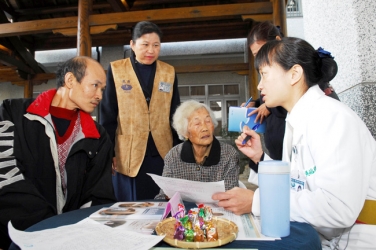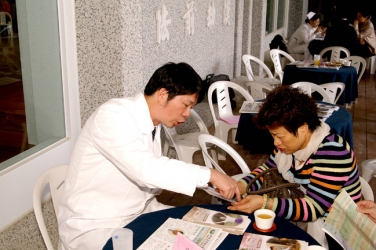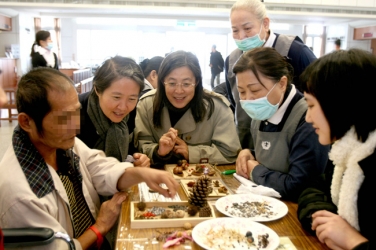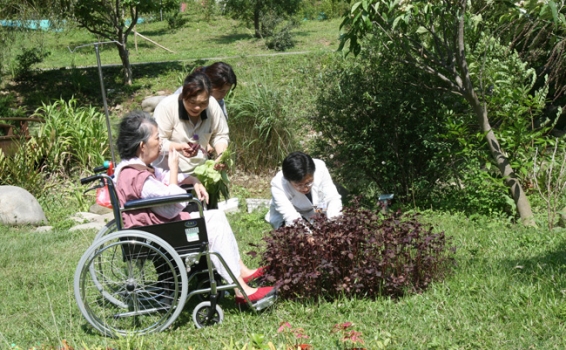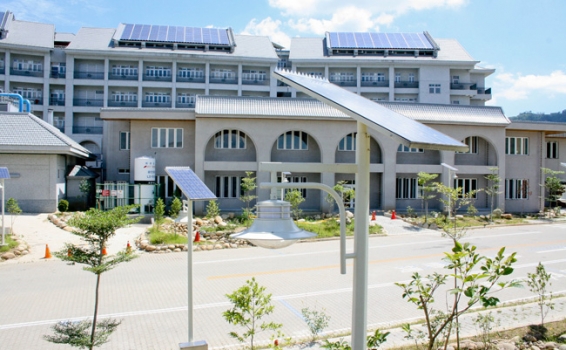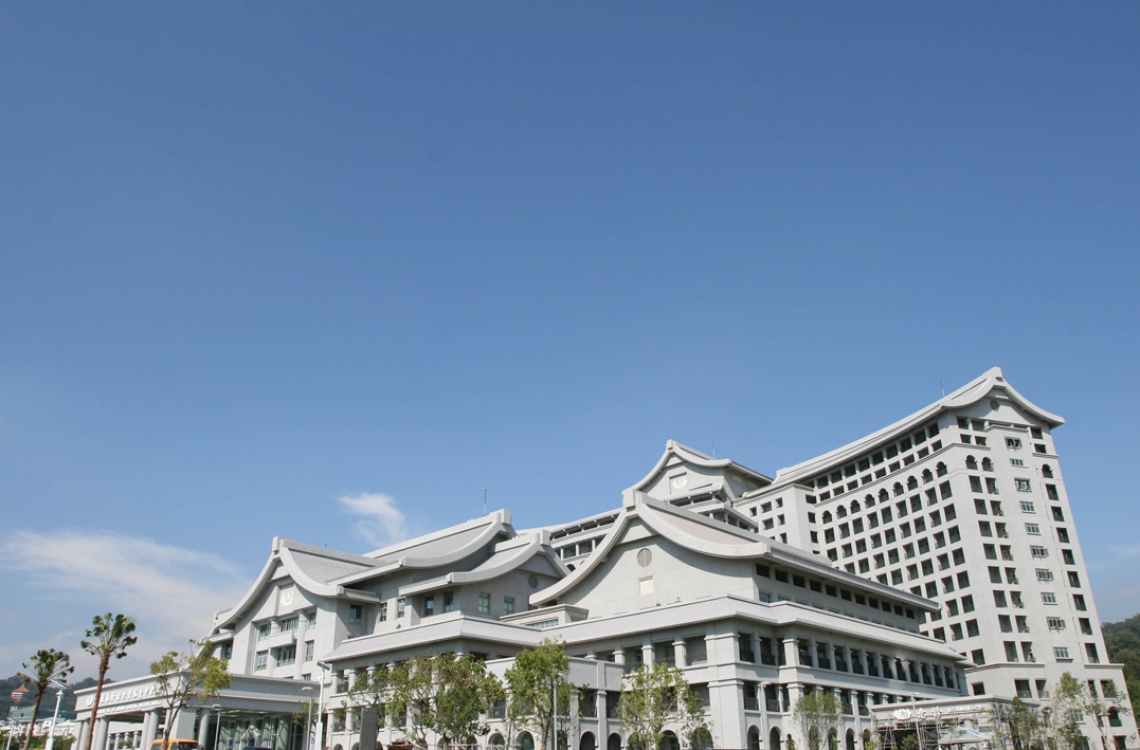Taichung Tzu Chi Hospital
Taichung Tzu Chi Hospital was officially inaugurated on January 23, 2007, completing the Tzu Chi medical network by integrating with the Tzu Chi hospitals in northern, southern and eastern Taiwan.
Overcoming Obstacles
The medical institutions in the Taichung metropolitan area before 1996 centralized primarily in the Taichung City, sharing the same uneven distribution of medical resources as the Taipei metropolitan area. The total population of Dongshi, Shengang, Daya and etc. together exceeded 10,000, and yet only 1,000 hospital beds were available to them. While visiting a hospitalized Tzu Chi commissioner, Master Cheng Yen witnessed the entire emergency room filled with patients waiting for vacant beds, as well as patients who passed away on the way to the hospital. The scene prompted her to build a hospital in Taichung.
The decade-long completion of Taichung Tzu Chi Hospital was, much like Taipei Tzu Chi Hospital, met with twists and turns. While scouting for appropriate sites, the countryside landscape of Tanzi County attracted Master Cheng Yen’s attention as a potential site for the hospital. However, the news spread like wildfire, initiated a upsurge in purchases of nearby properties. The skyrocketed land price became the hospital’s first hurdle.
Senior volunteer Chu I-Te and Honorary Board member of the central district Wu Ching-Yun both have a comprehensive understanding of the obstacles and predicaments the Foundation had encountered while attempting to acquire the land and, after acquiring the land, the process of building the hospital.” A piece of large surface land is hard to find, one that satisfies the needs of a hospital is even harder,” volunteer Chu said. The Foundation eventually suspended the project over the concerns of high rise in land price, and the plan sat idled for years to come.
Prior to surveying the site, Volunteer Wu, concerned with the potential health risks for Master Cheng Yen walking into uninhabited wasteland, rented a helicopter to hover above the land and take aerial photos, and presented them to Master Cheng Yen. After the mediation of Tzu Chi Foundation Vice CEO Lin Pi-Yu and Dir. Hsiao Hui-Te of General Affairs, the Foundation acquired the first piece of large surface land. Majority of the sporadic land around the hospital campus were, after vigorous visits and negotiations, acquired in 1997. The complicated legal procedures, including land development permit, environmental assessment, building permit and etc., tested the wisdom and perseverance of the Tzu Chi volunteers. Factories that rented the nearby land that belong to Taiwan Sugar Corporation agreed to relocate to Houli industrial Park under the persuasion of Volunteer Wu, allowing the hospital to meet all the requirement for the permits and assessments.
The Auspicious Four
Another obstacle in the way of the land use certificate was the fact that a part of the hospital campus overlapped with the national roadway. After negotiations with various government departments, the certificate was issued by rebuilding the overlapping section underground.
Three volunteers, Chu I-Te, Wu Ching-Yun, and Hsu Ming-Hua, met with Master Cheng Yen at the abode, recommended to break ground on Nov. 17, 2001. Master declined after reading the 4 provisos on the certificate: 4 pieces of land belonging to the Water Resource Bureau are yet to be acquired, one piece of land belonging to the National Property Administration are yet to be acquired, an ownerless land are yet to be resolved, and surrounding transportation network are yet to be planned. “We cannot do what is against our principles, not to mention what is illegal.” Master Cheng Yen said to her disciples. “As soon as these provisos are met, we can break ground any time.” Half a year later, all the provisos were met, and the hospital finally broke ground on April 14, 2002.
The planned date of the groundbreaking ceremony was, according to Volunteer Chu, was deliberately chosen for a reason. The number “four” in Mandarin is a homophone to death and is considered inauspicious in Chinese culture. Hence hospitals, for obvious reasons, avoid the number “four” by removing it from the floor numbering system completely. So why chose a date with two fours, “April” and “Fourteenth”, for groundbreaking? It is because that April 14, 1966, or March 24 on the traditional Chinese calendar, marks a pivotal event in the history of Tzu Chi Foundation - The founding of Buddhist Tzu Chi Merit Association—which is now known as the Buddhist Compassion Relief Tzu Chi Foundation.
Prior to the groundbreaking ceremony, the volunteers from the central district cleaned the hospital campus, organized a vegetable and fruit garden, planned volunteer meetings, parent-child camps, mountain hiking and other activities, building popularity for the yet-to-be-built hospital.
Advancing Locally and Internationally
On January 8, 2007, Taichung Tzu Chi Hospital launched a two week long free health consultation clinic led by the first superintendent of the hospital Hsu Wen-Lin and two vice-superintendents Chen Tzu-Yung and Chuan Shu-Ting, attracting participation from the local communities. With the first emergency room patient, the first emergency first aid, the first hospitalized patient, the first surgery, the first child delivered, to the first image-guided brain tumor resection, the newly founded Taichung Tzu Chi Hospital progresses forward with each solid step.
Events such as New Year’s eve dinner with care recipients, the hospital’s one-month old celebration, and diagnosis for community health sped up Taichung Tzu Chi Hospital’s effort into community health.
The entire hospital staff worked hand-in-hand to pass the regional hospital assessment 114 days after inauguration. Soon, many honors and awards followed: home care evaluation, mother-baby friendly evaluation, bilingual friendly hospital, promotion of patient safety and so on. Also, the mobile baby bathing cart and concentrated Chinese medicine power dust collecting apparatus invented by the hospital were successfully patented.
At the end of 2007, Wise Young, known as the “neural architect” to the global medical field, visited Taichung Tzu Chi Hospital and signed a transnational cooperation on the human trials of stem cell transplant for spinal treatment. And on May 17, 2008, the hospital collaborated with the National Museum of Natural Science to host the first International Conference on Horticultural Therapy, which is now a regular annual event, to introduce internationally novel therapies into interdisciplinary collaborations.
In addition to being earthquake-resistant, Taichung Tzu Chi Hospital is also known for its green architectural design, as well as the solar power generation system that has the highest generating capacity nationwide, the most mature illustration among the hospitals of the medical network and the model in the advocate of solar power. During the construction of the new medical building in the hospital’s first district, the solar power system was 1.5 times greater than the former, and the electricity generated during the test run had already gone to the construction site for use.

